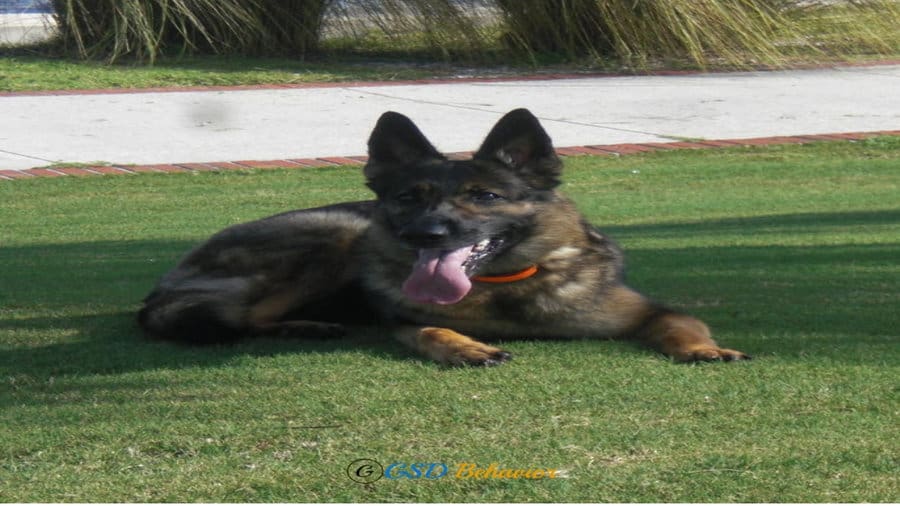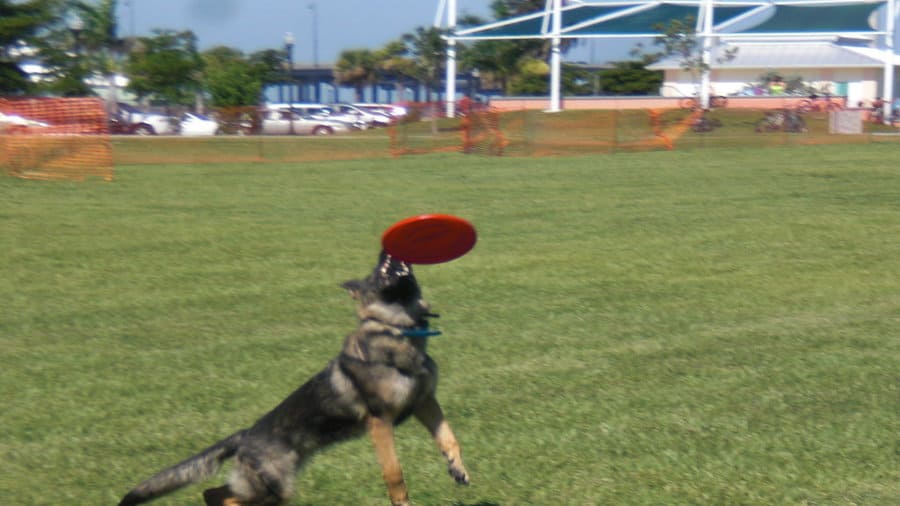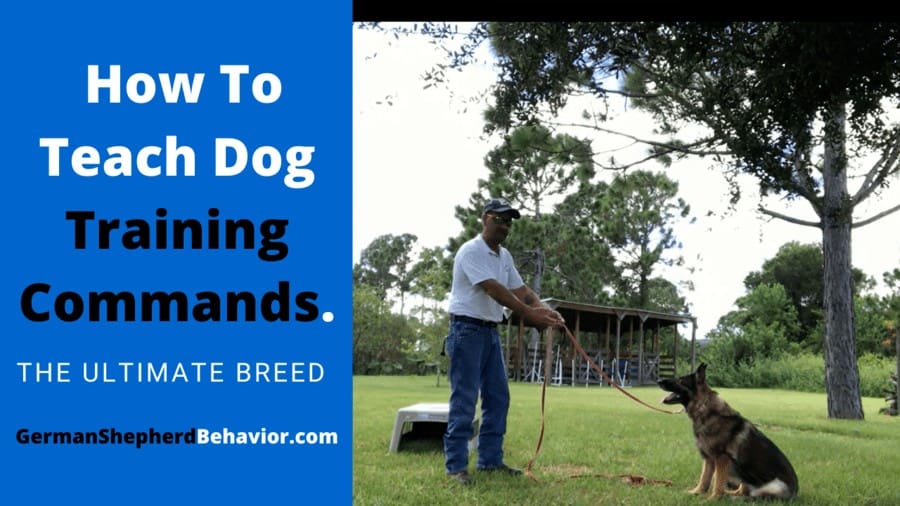Are you struggling with teaching sit-stay and -Down-Stay Commands, or the come when called command? After watching this video, you won’t be anymore.
Today, I’m demonstrating with my German Shepherd, how to teach obedience commands.
You Don’t Want To Make These Mistakes that I’m sharing in this video.
German Shepherd Training Commands:
When we are teaching commands to our dogs, our dogs are wanting to please us, we don’t want to confuse them. Each week I work with new clients with their German Shepherds and they are trying so hard with their dog teaching these obedience commands.
It can be frustrating when we are doing our best to learn how to do something that doesn’t come naturally to us. I know because I was doing the same myself before I became a dog trainer. I’m going to do my best to explain this in the easiest way possible.
Basic obedience commands:
Whether you’re doing a sit/stay command, or a stand command, or a down/stay command, or come when called command. This is why I decided to cover it, in the demonstration video, because this is what my students are struggling with.
All I see is people doing old traditional dog training.
I wrote about this on Tina’s post, a stay at home mom, what she was doing when training basic obedience commands. Where they would teach the dog to sit, then they do stay, and then they walked to the end of the leash and two seconds later they called the dog to them.
So you’re teaching three things at once, with the dog. So the dog learns to judge the body language through your actions. What you’re actually doing, is teaching the dog to sit for two seconds, and then break. I am not a fan of teaching it this way. Sit means stay.
Sit-Stay Command:
So if I say-sit, Princess, If she breaks, no sit, not stay. The first thing I said is to sit, not stay. Sit means stay. So if you don’t want a teach the stay command with a double command it’s okay if you want to train your dog that way. But if you’re like me, just use sit and If the dog breaks, you go back, no sit when teaching this command.
So when you start building sit/stay longer time with your commands, people walk back and forth. I always tell people to start off with the leash short. Go back, praise the dog. Then I use the sit. Then instead of calling the dog to you from standing in front of them, I’m going to go back to the heel position and release them.
So that’s where I might throw a toy, and say Okay. Because you only want to work the come when called command, when the dog is in the prey drive position. Like I wrote in the video with Tina. You can watch Tina Training here. And I want the dog to sit, and if I say sit, stay, and walk away, it doesn’t break. We don’t want to confuse the dog.

Down-Stay Command:
It’s no different when you do down-stay. So if I say Princess down. Down, stay, and I walk away. I’m not going to call from here right now. At the beginning level of training, I don’t want to do it. I want to go back here. Good girl, down. I don’t use stay, just for the video I’m demonstrating. I just use sit and down. Okay. Princess knows both because I’ve taught through both making so many videos. But just because you bend over doesn’t mean she gets up when you teach both commands.
So if she broke, no, down. What you do is to teach your dog the release command, which means… Princess is okay, free. That means you can get up. You see her go to get up? That means you don’t have to lay down anymore. It’s important for the dog to know when it’s in command, and out of command.
So if you have never taught a release command, let me show you right now, So what you want to do is have a bunch of food in your pocket, and you want to think of a command like I do a lot of verbal cues, you can say, “Good job.” And then the dog moves out of whatever training command you are working on.
Remember when you’re teaching commands it’s just a tone, in the beginning, there has to be an action to it, and the dogs got to do 50, repetitions consistently to start learning, depending on how smart your dog is and the age, but a minimum of 50. So if I say sit, Prince, I say, okay, that’s her cue to get up. We want to make it clear to our dog and keep it simple for them to learn.
You maintain happiness, Training’s not about heavy corrections. In fact, it’s about teaching dogs to behave because you want them to learn. When I taught Princess this heel position, one step back, a piece of food here. She comes up, positions my foot up, another piece of food here. Well, that’s for another video.
I just wanted to cover with you, is talking about when you’re doing commands, because I see every day, every week when I work with a new client, they’re wondering why they drop the leash, the dog keeps breaking the commands because they taught it that way.
Come-Command:
If you’re going to use a ball to teach come when called, then you do it when the dog’s in the prey drive mode. If you’re not going to use the ball or any other toy, and you’re going to use food, then you have to let the dog go away from you and you would do it the same way, I’m going to demonstrate with the ball.
You become the prey if you’re going to use food. Whether you toss treats out on the pavement for the dog, and then the dog picks it up. Come running back. Give it another treat. That’s showing the dog what you want it to learn.

So if I use the ball, if I say, Princess, go-get it. Through the ball for your dog, when they pick up the ball, give them the command while you run so they will want to come running back to you. This keeps your dog engages.
If you don’t teach it to the dog this way, you’re just going to confuse them. This is how a dog learns to come on command. You got to engage. Don’t just stand there and say, “Come.” Too many people take a dog off a leash to teach this, and then their dog plays keep-away game, and won’t give them the ball.
Border collies, herding dogs, most of the time they naturally bring it back because they want you to kick it again. But you should still teach them on a long line, too.
I hope this information helps you out. Princess and I do appreciate you checking out our videos. If you find them helpful, share it with a friend. Please like and subscribe, it helps us out with supporting the channel.
If you have any questions, let me know in the comments.
Happy Training,
Dennis Dalia:

